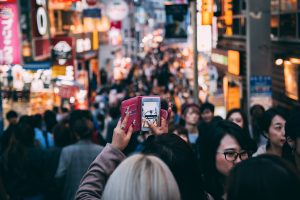You’ve heard it before: what speaks to me might not speak to you. This is the overarching idea behind content localisation, a buzzword in content marketing, which is – just like content marketing – often misunderstood. Officially defined as “the process of making something local in character or restricting it to a particular place”, localisation is often only talked about in the context of different markets or languages. This isn’t wrong, but it does ignore a full scope of what the term means.
So what does content localisation mean, then?
Localisation isn’t just about translating text into another language, exchanging images to make the people them look like ‘local’ people or changing certain keywords to make your content more searchable in different countries. (Although that part of localisation is important, too).
Localisation means relevancy. The basic question brands need to ask themselves is this: how is my business / offering / content relevant to a particular audience?
Content localisation doesn’t just apply when moving across borders, but when appealing to different audiences in the same market. A brand’s product or offering may be of interest l to both young millennials and baby boomers, but not in the same way.
For example, the reason why Gucci has recently risen in popularity among millennials and teens is not the same reason why celebrities and more affluent older generations love wearing the fashion brand. They like it for different reasons. The brand is relevant to them in a different way. As a result, Gucci markets, or localises, its brand differently to these two audiences.
Fashion labels in particular are a great example of how a brand can be perceived differently across borders. The American brand Coach, for example, is considered a premium designer label in Southeast Asia, but has a somewhat more ordinary positioning in the U.S.
So here comes the next question: is it great content localisation if a low-quality beer from Germany is sold in Southeast Asia as a top-shelf premium import brew? I would say: yes (although slightly misleading in this case).
After all, the positioning of a brand changes with different audiences and markets depending on what else there is. (Reader: Are you saying Southeast Asia offers such bad beer that it makes other low-quality beer seem premium? Me: I would never say that.)
Let’s remember that localisation isn’t just changing imagery and translating social media copy – it’s about branding and positioning, finding a new audience, discovering a different value product. For Gucci, it was finding a way to appeal to a younger audience. For the German beer, it’s insinuating that a beverage imported from a country renowned for beer is a more informed, more high-quality choice than what is available locally.
What can content localisation look like?
- Adapting your visuals to resemble your target audience (regardless of the market)
- Using the right tone of voice and language complexity that will speak to and resonate with a particular audience
- Be aware of cultural and political sensitivities across customer segments, generations and markets
Create a flexible content strategy, instead of following a yes-or-no, black-or-white, brand strategy. Remember what is true for your brand in one market, or with a certain customer segment, may not be universally true. Rolling out a localised version of a global brand campaign is not an oxymoron.
What’s the ‘local’ channel?
The localisation of your content extends to considering which channel it will be published on. While Facebook and Instagram enjoy great popularity in Southeast Asia and across different demographics, other markets may also have other more popular channels.
For example, if you are planning to venture into South Korea, you’ll want to be on KakaoTalk, on WeChat in China, or on Line in Japan. Crossing borders doesn’t just require translations – brands also need to adapt their content to each new channel.
The same applies for different target audiences. While young millennials and Gen Zs may scroll through the TikTok and post on SnapChat, older millennials and Gen X tend to dig through Reddit to consume content.
Finding the right channel for your message is important. So do your homework and find out where your audience plays online.
Here is your content localisation checklist:
- Market Research: Find out as much as you about your new market and audiences. Is there a need for your brand? What are consumers looking for?
- Brand Research: Who are your competitors? What’s their positioning? How does your brand fit in the market?
- Cultural Considerations: What sensitive topics should you avoid? What major events and trends can you leverage?
- Content: Revise your text, images, videos, reports and more. Translate, transcreate, adapt and curate new content.
- Audiences: Find new audiences that you may have not considered previously. Test and learn about who you are talking to.
- Measure: That’s the only way to find out what actually works. Make sure you measure your activities and campaign.
Get lost in translation? Don’t worry, it even happens to Bill Murray – and he’s great. If you want to talk about how to upgrade your content to cross borders or find new audiences (or chat about Bill Murray over some Suntory), send us a message to [email protected].


